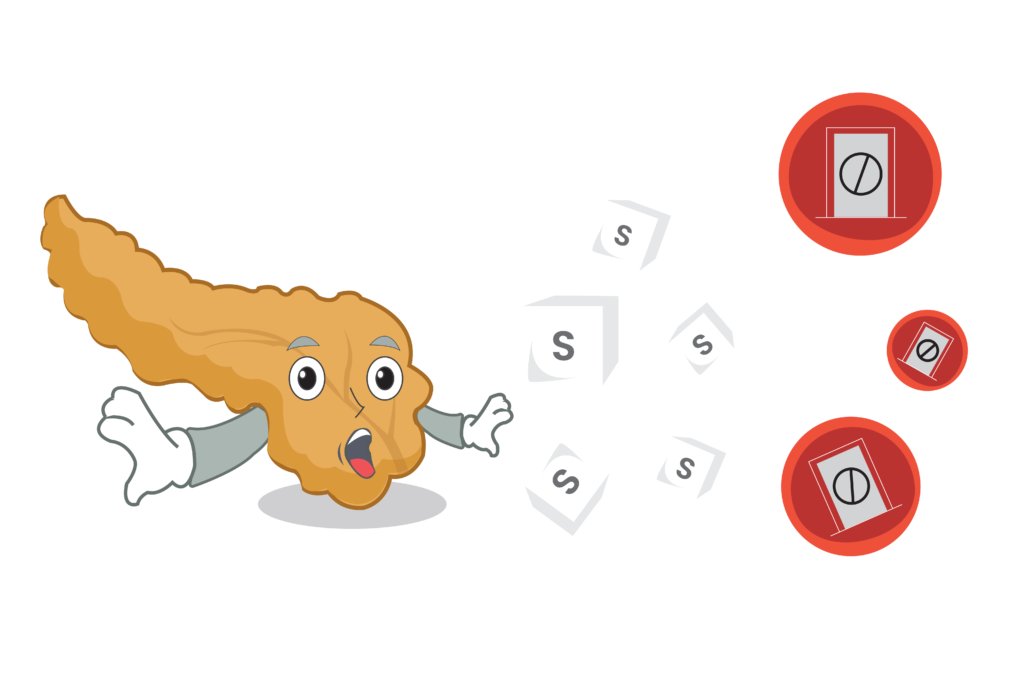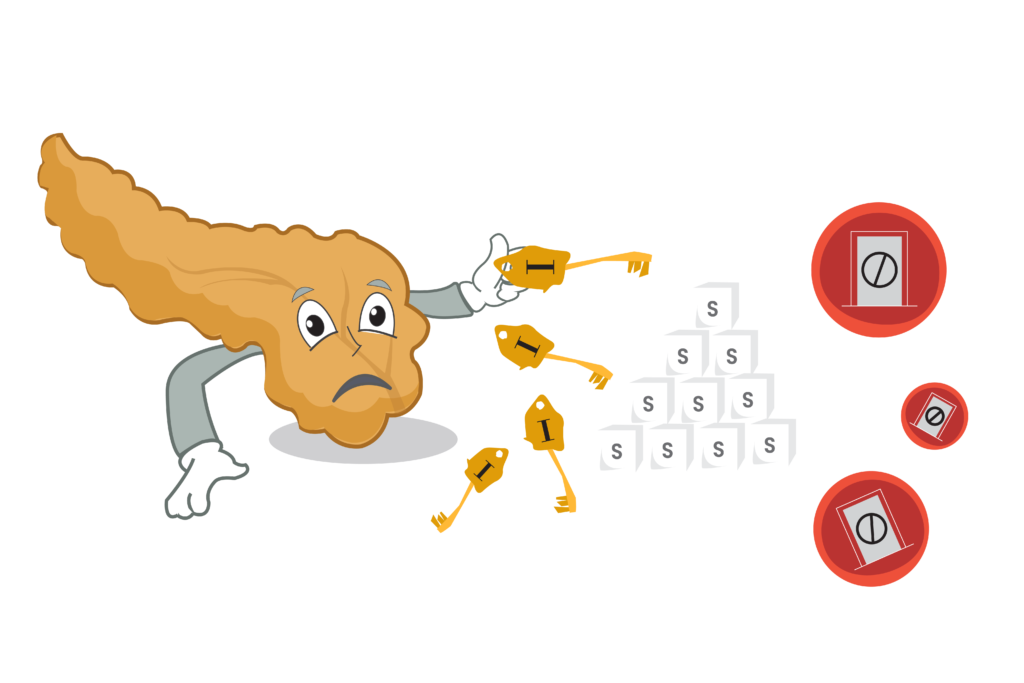Let’s Start a DIA-Logue – Discussion around Diabetes

The drastic shift in lifestyle in terms of food choices and nature of work, has unleashed a plethora of disorders that are more or less related to ‘food metabolism’. Diabetes Mellitus is one such disorder emerging as a pandemic of sorts. It is a group of metabolic disorders and diseases where ‘carbohydrate’ metabolism is compromised, leading to high blood sugar levels over a prolonged period and that eventually leads to many other complications!
Let us start to understand how a normal body would process ‘Carbs’
The body requires food to fuel its engine, much of which comes from carbohydrates, proteins, and fats. When you eat foods that contain carbohydrates, it is broken down into smaller units of glucose by complex biochemical processes that ensure a constant supply of energy to living cells. Glucose is a type of sugar that provides energy to cells. The glucose then moves into the bloodstream and the body detects a rise in blood glucose level. In response to that, the pancreas which is a gland starts to release a hormone called insulin. Insulin helps move this glucose from your blood into cells.
Insulin acts like a key that will unlock the doors to the cells in your body, for the glucose to enter and provide energy. That way the blood glucose level starts to drop. In addition to insulin, there is an additional hormone produced by the pancreas – glucagon. Glucagon tells your liver to release stored sugar if blood sugar is too low or you have not eaten for many hours. Another hormone called glucagon-like peptide 1 (GLP-1) released by the gut stimulates the beta cells in the pancreas to produce the right amount of insulin when the blood sugar is high. It also helps to lower the amount of sugar released by your liver.

What happens in Diabetes?
Diabetes is a chronic condition which affects body’s mechanism of converting glucose to energy and causes blood glucose level to increase.
There are two main types of diabetes: type 1 and type 2 and a many other types.
When you’ve got type 1 diabetes, you can’t make any insulin at all. This happens because your body attacks the cells in your pancreas that make the insulin. Your body still breaks down the carbohydrate from food and drink and turns them into glucose. But when the glucose enters your bloodstream, there’s no insulin to allow it into your body’s cells. More and more glucose then builds up in your bloodstream, leading to high blood sugar levels.

If you’ve got type 2 diabetes, it’s a bit different. The insulin your pancreas makes can’t work properly, or your pancreas can’t make enough insulin. In response to the glucose released into your blood, the pancreas responds by releasing insulin but this insulin does not unlock the doors to the cells for glucose uptake and subsequent release of energy. This can lead to a rise in blood sugar levels.

In all types of diabetes, glucose can’t get into your cells properly, so it begins to build up in your blood. Increased levels of glucose in your blood, cause a myriad of different problems – cardiovascular disease, peripheral vascular disease, nephropathy, changes to the retina, and blindness that can lead to disability and premature death.
Genetic susceptibility and environmental influences seem to be the most important factors responsible for the development of this condition. A drastic increase in physical inactivity, a shift in food habits, obesity, and type-2 diabetes has been recently observed.
Diabetes Management is Possible!
Fortunately, because environmental factors like – food habits and lifestyle are modifiable, disease management is largely possible. Diet constitutes a crucial aspect of the overall management of diabetes, which may involve diet alone, a diet with oral hypoglycemic drugs, or diet with insulin. While there is no specific diet for diabetes, the foods you eat not only make a difference to how you manage your diabetes, but also to how well you feel and how sustainable it is.
The primary goal in the management of diabetes is to achieve as near normal regulation of blood glucose (postprandial and fasting) as possible. If you have diabetes, a healthy eating plan for you is not that different from a healthy eating plan for people without diabetes – that is, a diet centered on fruits, vegetables, whole grains, legumes, and low-fat dairy products. However, you’ll want to pay special attention to your carbohydrate intake. The total quantity and quality of carbohydrates consumed have the strongest influence on glycemic response.
Many will tell you to completely stir off carbohydrates or gluten which will mean giving up on rotis, breads, pastas! Following a type 2 diabetes diet doesn’t mean you have to give up all the things you love — you can still enjoy a wide range of foods when managing this disease. Picking the right foods to eat when you have diabetes can help lower your blood sugar or keep it stable – this is no less than a ‘balancing act’!
We have got this!
TWF’s Sail Flour is carefully crafted from a blend of nutritious grains, designed especially for diabetics. The flour is tailored to effectively manage sugar spike in body by regulating its glycemic response. The intuitive blend of grains make the flours notably low GI.
We worked around a few principles to create this revolutionary flour to work with your body in synergy and help in better meal planning!
1. Nutrient dense – Foods that are dense in nutrients helps get your ‘balancing act’ together without tipping you off.
2. Rich in fiber – Your body digests high-fiber foods more slowly and the fibers also regulate the movement of food in your gut — which means a more moderate rise in blood sugar.
3. The right mix of fibers – insoluble fiber, the kind found in whole grains, and soluble fiber, found in beans. While soluble fiber lowers your blood sugar levels by improving insulin sensitivity, insoluble fibers promote the growth of healthy gut probiotics, reduce fasting insulin levels and thus regulate satiety.
4. Nutrients like dietary polyphenols that increase insulin sensitivity, slow down carbohydrate digestion by inhibiting enzymes.
5. Right starch-protein interaction – In terms of possible mechanism, wheat flour is composed of granules with a starch core surrounded by a protein network. The protein network may inhibit the rate of starch hydrolysis in your gut – indicating a decreased rate of digestion and reduced blood-glucose responses.
Diabetes is manageable and sometimes reversible but it takes consistency and vigilance to stay the course. A monitored sustainable meal plan, active lifestyle, and timely medical care can help you lead a seamless normal life!
References
https://www.mayoclinic.org/diseases-conditions/diabetes/in-depth/diabetes-management/art-20047963
https://www.who.int/health-topics/diabetes



Responses